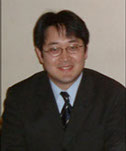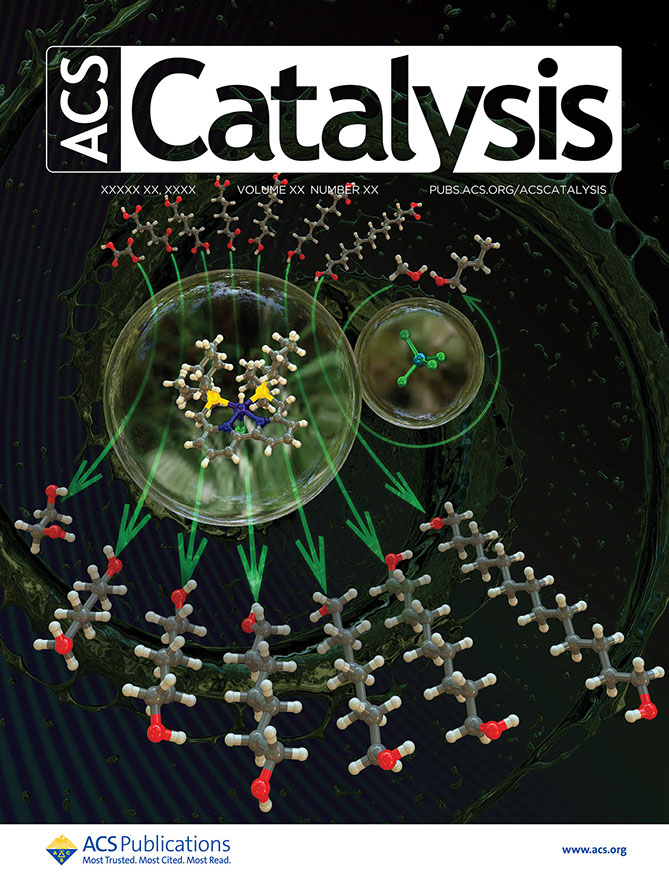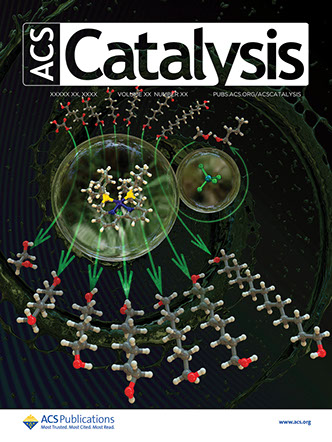Susumu Saito
Research
Publications
Susumu Saito
Professor
Graduate School of Science, Nagoya University
Chikusa, Nagoya 464-8602, Japan
E-mail: saito.susumu.c4@f.mail.nagoya-u.ac.jp
Phone & Fax: 052-789-5945
Education:
Bachelor: Nagoya University, 1991
Master: Nagoya University,1993
Visiting Scientist: Harvard University, (Prof. E. N. Jacobsen's Lab.)1994
Dr. Eng.: Nagoya University, 1998
Field of Research:
Organic chemistry including synthetic organic chemistry, molecular recognition chemistry, main-group organometallic chemistry, asymmetric catalysis, design of protonic acid catalysts, etc.
Appointments:
The JSPS Fellowships for Japanese Junior Scientists 1993-1995
Assistant Professor, Graduate School of Engineering, Nagoya University (Prof. H. Yamamoto's Lab), 1995-2002
Associate Professor, Graduate School of Science (Prof. R. Noyori's Lab) & Institute for Advanced Research, Nagoya University, 2002-2015
Professor, Graduate School of Science, Nagoya University, 2015-2019
Professor, Research Center for Materials Science, Nagoya University, 2019-2022
Professor, Integrated Research Consortium on Chemical Sciences (IRCCS), Nagoya University, 2022-present
Awards and Honors:
Visiting Lecturer, Aichi University of Education, 1999
The Chemical Society of Japan Award for Distinguished Young Chemists, 2001.
Visiting Associate Professor Institute for Chemical Research, Kyoto University, 2004
Visiting Lecturer, Institute for Materials Chemistry and Engineering, Kyushu University, 2009
Asian Core Program Lectureship Award (from Taiwan), 2009
Asian Core Program Lectureship Award (from China), 2009
Visiting Lecturer, Graduate School of Science and Technology, Gunma University, 2017
Nagase Research Award, 2018
SSOCJ Tosoh Award for Environment and Energy 2018
Visiting Professor, Nanjing University of Science and Technology, 2019
Lecturer, Institute for Materials Chemistry and Engineering, Kyushu University, 2022
The 24th Green and Sustainable Chemistry (GSC) Award by JACI, 2025


Research Interests:
Two or multiple organic molecules interact with each other, using coordination bonding, hydrogen bonding, or any other hydrophobic and hydrophilic interactions. My research interests are focusing on how to create a novel combination across such interactive molecules, which would be expanding to new chemical and physical functions and/or catalytic activities presently unknown. Among those interactions, for example, Lewis acids and bases form coordination bonding, thereby promoting effective organic transformations; cooperatively arranged Watson-Crick base pairs comprise multiple hydrogen bonding, leading to a helical structure of poly(nucleic acids) and serving as bio-informatics. Molecular recognition plays a significant role in such systems, by which organic molecules show a specific function. Participation of both coordination and hydrogen bondings in molecular assembly would be expected to have potential to induce remarkable binding properties that lead to new catalysis and functions but is virtually unexplored. Toward this goal, design and synthesis of hitherto unknown organic compounds and molecular catalysts, as well as control of structure and functions of each molecule and/or their assembly, are among the current great interests.
Selected Recent Publications

Naoki Noto,* Taiki Nagano, Mikito Fujinami, Ryosuke Kojima, Susumu Saito*
Commun. Chem., 8, 288 (2025). (DOI: 10.1038/s42004-025-01678-w) [PDF]
C(sp3)–H alkylation using H2O catalyst for hydrogen atom transfer over Ag-loaded TiO2 photocatalysis
Yuji Sakai, Buddihini P. Ranasinghe, Shogo Mori,* Susumu Saito*
Tetrahedron Lett., 170, 155766 (2025). (DOI: 10.1016/j.tetlet.2025.155766) [PDF]
Chem. Eur. J. 31, e202500955 (2025). [PDF]
Transfer learning across different photocatalytic organic reactions
Nat. Commun., 16, 3388 (2025). (DOI: 10.1038/s41467-025-58687-5) [PDF]
No matter what energy input: tetradentate PNNP-ligated iridium complexes for CO2 reduction
Chem. Eur. J., 31, e202500328 (2025). (DOI: 10.1002/chem.202500328) [PDF]
Artificial photosynthesis directed toward organic synthesis
Shogo Mori, Riku Hashimoto, Takashi Hisatomi, Kazunari Domen, Susumu Saito*
Nat. Commun., 16, 1797 (2025). (DOI: 10.1038/s41467-025-56374-z) [PDF]
Press Release (Nagoya University) 「太陽光と水で医薬品材料とグリーン水素を生成」.
Database Construction for the Virtual Screening of the Ruthenium-Catalyzed Hydrogenation of Ketones
Haruno Nakajima, Chihaya Murata, Naoki Noto,* Susumu Saito*
J. Org. Chem., 90, 1054–1060 (2025). (DOI: 10.1021/acs.joc.4c02347) [PDF]
EES Catal., 3, 254–258 (2025). (DOI: 10.1039/d4ey00261j) [PDF]
Organometallics, 43, 3013–3021 (2024). (DOI: 10.1021/acs.organomet.4c00355) [PDF]
Chem. Commun., 60, 13682–13685 (2024). (DOI: 10.1039/d4cc03791j) [PDF]
J. Am. Chem. Soc., 146, 25963–25975 (2024). (DOI: 10.1021/jacs.4c03683) [PDF]
Angew. Chem. Int. Ed., 63, e202403886 (2024). (DOI: 10.1002/anie.202403886) [PDF]
Inorg. Chem., 62, 14116–14123 (2023). (DOI: 10.1021/acs.inorgchem.3c02412) [PDF]
*Shogo Mori, Shu Sakurai, *Hiroshi Naka, *Susumu SAITO
Synlett, 34, 2361–2373 (2023). (DOI: 10.1055/a-2124-4037) [PDF]
Yuki Hashiba, Shogo Mori, Ivven Huang, Yuna Morioka, Hiroshi Naka, *Susumu Saito
Asian J. Org. Chem., 12, e202300230 (2023). (DOI: 10.1002/ajoc.202300230) [PDF]
*Naoki Noto, Akira Yada, Takeshi Yanai, *Susumu Saito
Angew. Chem. Int. Ed., 62, e20221910 (2023). (DOI: 10.1002/anie.202219107) [PDF]
Arylamines as More Strongly Reducing Organic Photoredox Catalysts than fac-[Ir(ppy)3]
ACS Catal., 12, 15400 (2022). (DOI: 10.1021/acscatal.2c05034) [PDF]
[Most Read as of Jan 2023; Highlighted by OPR&D, 2023, 27, 1–9]
*Miho Yamauchi, Hikaru Saito, *Toshiki Sugimoto, Shogo Mori, *Susumu Saito
Coord. Chem. Rev., 472, 214773 (2022). (DOI: 10.1016/j.ccr.2022.214773) [PDF]
Chem. Commun. (Invited in ChemComm “Pioneering Investigators Collection 2022”), 58, 9218–9221 (2022). (DOI: 10.1039/d2cc01701f) [PDF]
Bendik Grømer, Shota Yoshioka, *Susumu Saito
ACS Catal., 12, 1957 (2022). (DOI: 10.1021/acscatal.1c04392) [PDF]
[Editor’s Choice & Front Cover; Most Read as of Jan 2023]
Farzaneh Soleymani Movahed, Siong Wan Foo, Shogo Mori, Saeko Ogawa, *Susumu Saito
J. Org. Chem., 87, 1, 243 (2022). (DOI: 10.1021/acs.joc.1c02318) [PDF]
[Organic Chemistry Portal: https://www.organic-chemistry.org/abstracts/lit8/302.shtm; Org. Chem. Highlights, Mar 27, 2023: https://www.organic-chemistry.org/Highlights/2023/27March.shtm]
A Highly Durable, Self-Photosensitized Mononuclear Ruthenium Catalyst for CO2 Reduction
Recent Advances in Light-Driven Carbon–Carbon Bond Formation via Carbon Dioxide Activation
Synthesis, 53, 3263 (2021). (DOI: 10.1055/a-1577-5947; Art ID: ss-2021-f0295-st) [PDF]
Shogo Mori, *Susumu Saito
Green Chem. 23, 3575 (2021). (DOI: 10.1039/D1GC00753J). [PDF] (highlighted in back cover)
Shota Yoshioka, Ke Wen, *Susumu Saito
Bull. Chem. Soc. Jpn. 94, 1510 (2021). (DOI: 10.1246/bcsj.20210023).
(Selected Paper) [PDF] [Inside front cover]
Reaction of H2 with Mitochondria-Relevant Metabolites Using a Multifunctional Molecular Catalyst.
Shota Yoshioka, Sota Nimura, Masayuki Naruto, *Susumu Saito
Sci. Adv. 2020, 6, eabc0274 (DOI: 10.1126/sciadv.abc0274). [PDF]
PNNP四座配位子をもつ精密金属錯体触媒を用いる再生可能炭素資源の還元法の開発.
Shota Yoshioka, Jieun Jung, *Susumu Saito
J. Syn. Org. Chem. Jpn. 2020, 78, 856–866. [PDF]
Farzaneh Soleymani Movahed, Dinesh N. Sawant, Dattatraya B. Bagal, and *Susumu Saito
Synthesis 52, A–J (2020). (DOI: 10.1055/s-0040-1707174) [PDF]
Ag(I)/TiO2-Photocatalyzed N-Methylation of Amino Acids with Methanol
Yuna Morioka, Ivven Huang, *Susumu Saito, and *Hiroshi Naka
ChemRxiv. Preprint (2020). (DOI: 10.26434/chemrxiv.12588266.v1)
J. Am. Chem. Soc. 142, 10261–10266 (2020). (DOI: 10.1021/jacs.0c03097) [PDF]
Spatiotemporal Control of Amide Radicals During Photocatalysis
Shogo Mori, Takahiro Aoki, Kaliyamoorthy Selvam, Shunichi Fukuzumi, Jieun Jung, and *Susumu Saito
ChemRxiv. Preprint (2020). https://doi.org/10.26434/chemrxiv.12040146.v1
Reaction of H2 with Mitochondria-Relevant Metabolites Using a Multifunctional Molecular Catalyst
Catalytic Hydrogenation of Carboxylic Acids Using Low-valent and High-valent Metal Complexes
Shota Yoshioka, *Susumu Saito
Chem. Commun. (Feature Article) (2018), Advance Article (DOI: 10.1039/C8CC06543H) [PDF]
Catalytic transformation of functionalized carboxylic acids using multifunctional rhenium complexes.
Masayuki Naruto, Santosh Agrawal, Katsuaki Toda, Susumu Saito*,
Sci. Rep.7, 3425 (2017). doi: 10.1038/s41598-017-03436-y
Multifaceted catalytic hydrogenation of amides via diverse activation of a sterically
confined bipyridine–ruthenium framework.
Takashi Miura, Masayuki Naruto,Katsuaki Toda, Taiki Shimomura, Susumu Saito*,
Sci. Rep. 7, 1586 (2017). doi:10.1038/s41598-017-01645-z
Cationic Mononuclear Ruthenium Carboxylates as Catalyst Prototypes for Self-induced Hydrogenation of Carboxylic Acids
Masayuki Naruto, *Susumu Saito
Nat. Commun. 6, 8140 (2015). (doi: 10.1038/ncomms9140)
N-Methylation of Amines with Methanol at Room Temperature
Vasily N. Tsarev, Yuna Morioka, Joaquim Caner, Qing Wang, Richiro Ushimaru, Akihiko Kudo, Hiroshi Naka, and Susumu Saito
Org. Lett. 17, 2530–2533 (2015). (doi: 10.1021/acs.orglett.5b01063)
Synthesis of Propylene from Renewable Allyl Alcohol by Photocatalytic Transfer Hydrogenolysis
Joaquim Caner, Zijun Liu, Yuki Takada, Akihiko Kudo, Hiroshi Naka, and Susumu Saito
Catal. Sci. Technol. 4, 4093–4098 (2014). (doi: 10.1039/C4CY00329B)
Redox-Selective Generation of Aldehydes and H2 from Alcohols under Visible Light
Zijun Liu, Joaquim Caner, Akihiko Kudo, Hiroshi Naka, and Susumu Saito
Chem. Eur. J. 19, 9452–9456 (2013). (doi: 10.1002/chem.201301347)
Double Molecular Recognition with Aminoorganoboron Complexes: Selective Alcoholysis of β-Dicarbonyl Derivatives
Shunsuke Oishi, and Susumu Saito
Angew. Chem. Int. Ed., 2012, 51, 5395-5399 (doi: 10.1002/anie.201200304)
Iron/Amino Acid Catalyzed Direct N-Alkylation of Amines with Alcohols
Zhao, Yingsheng, Foo, Siong Wan and Susumu Saito
Angew. Chem. Int. Ed., 50, 3006-3009 (2011).(DOI: 10.1002/anie.201006660)
Importance of Open Structure of Non-metal Based Catalyst in Hydrogen Bond-promoted Methanolysis of Activated Amide: Structure Dynamics between Monomer and Dimer Enabling Recombinant Covalent, Dative, and Hydrogen
Bonds.
Shunsuke Oishi, Junichi Yoshimoto, and Susumu Saito
J. Am. Chem. Soc., 131, 8748–8749 (2009).
RhI-catalyzed Hydration of Organonitriles Under Ambient Conditions.
Akihiro Goto, Kohei Endo, and Susumu Saito
Angew. Chem.Int. Ed., 47, 3607–3609 (2008).
Hot Paper; SYNFACTS, 2008; Times cited: 〜90 (as of Sep 1, 2015)
Asymmetric Direct Aldol Reaction Assisted by Water and Proline-derived Tetrazole Catalyst.
Hiromi Torii, Masakazu Nakadai, Kazuaki Ishihara, Susumu Saito, and Hisashi Yamamoto
Angew. Chem. Int. Ed., 43, 1983-1986 (2004).
Times cited: 〜410, in the top 1% within its field(Essential Science IndicatorsSM(as of Sep 1, 2015).
